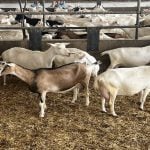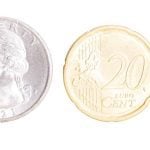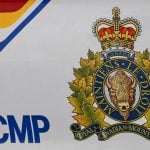A day after a cow was confirmed to have bovine spongiform encephalopathy, a quarter of the 1,000 head of cattle at the Ponoka auction market in central Alberta still didn’t have the mandatory ear tags that would help trace an animal in case of a disease outbreak.
“I’m not going to run that cow into the chute to tag her,” said Daryl Hill of Clive, Alta., who brought a single cow to the sale without the required Canadian Cattle Identification Agency ear tag.
A Canadian Food Inspection Agency official at the auction market could hardly believe her ears.
Read Also

VIDEO: Agritechnica Day 4: Robots and more robots, Nexat loves Canada and the trouble with tariffs
Agritechnica Day 4: Robots and more robots, Nexat loves Canada and the trouble with tariffs.
“With an excuse like that, I should probably write it up,” said Sheriesse Mass, who has the power to fine a producer $500 for not tagging an animal.
The day after Canada’s livestock industry ground to a halt because of a BSE confirmation in a single cow, Mass said every farmer and rancher in the country should have got the message that the ear tags with the bar code are key to keeping the industry alive.
“That producer has to take responsibility for his industry,” said Mass, who has been hassled continually by producers for more than a year about the ear tags.
“It’s their industry, yet we seem to be the bad guys. We’re doing this so the industry can be protected.”
On May 21, at least five producers hadn’t tagged their animals before bringing them to the Vold Jones Vold Auction Company in Ponoka. The market is a recognized tagging facility and can tag animals for producers, but Mass said auctions should educate clients, not baby them.
“If they want to look after their clients they have to make sure the herds are tagged.”
It was the fear of exactly this kind of disease outbreak that drove Canada’s beef industry associations to create a cattle identification system. It was implemented in 2001 and became mandatory last year.
Once an animal leaves the farm it must be tagged with a CCIA ear tag, which carries a bar code that can be scanned with each change in ownership. It stays with the animal until it is slaughtered. If there is a problem with the meat, or a disease, the animal’s movements can be traced all the way back to its original herd.
“We’re doing it so the industry can be protected. These tags make it a thousand times easier.”
From the beginning, many cattle producers have objected to the tags. They felt cow-calf producers shouldn’t have to bear the $1.50 to $2 cost per tag. Others thought it was an invasion of privacy.
Normal Wensted of New Norway, Alta., was one farmer who thought the tags were a waste of time, but he has since changed his mind
“I think it’s a good idea now,” said Wensted, who brought a group of cattle to the auction.
Blair Vold, owner of the Vold Jones Vold auction, said he has heard all the complaints in the past year, but thinks the outbreak will quiet any complainers.
“The resistance against it is going to be nil,” Vold said.














